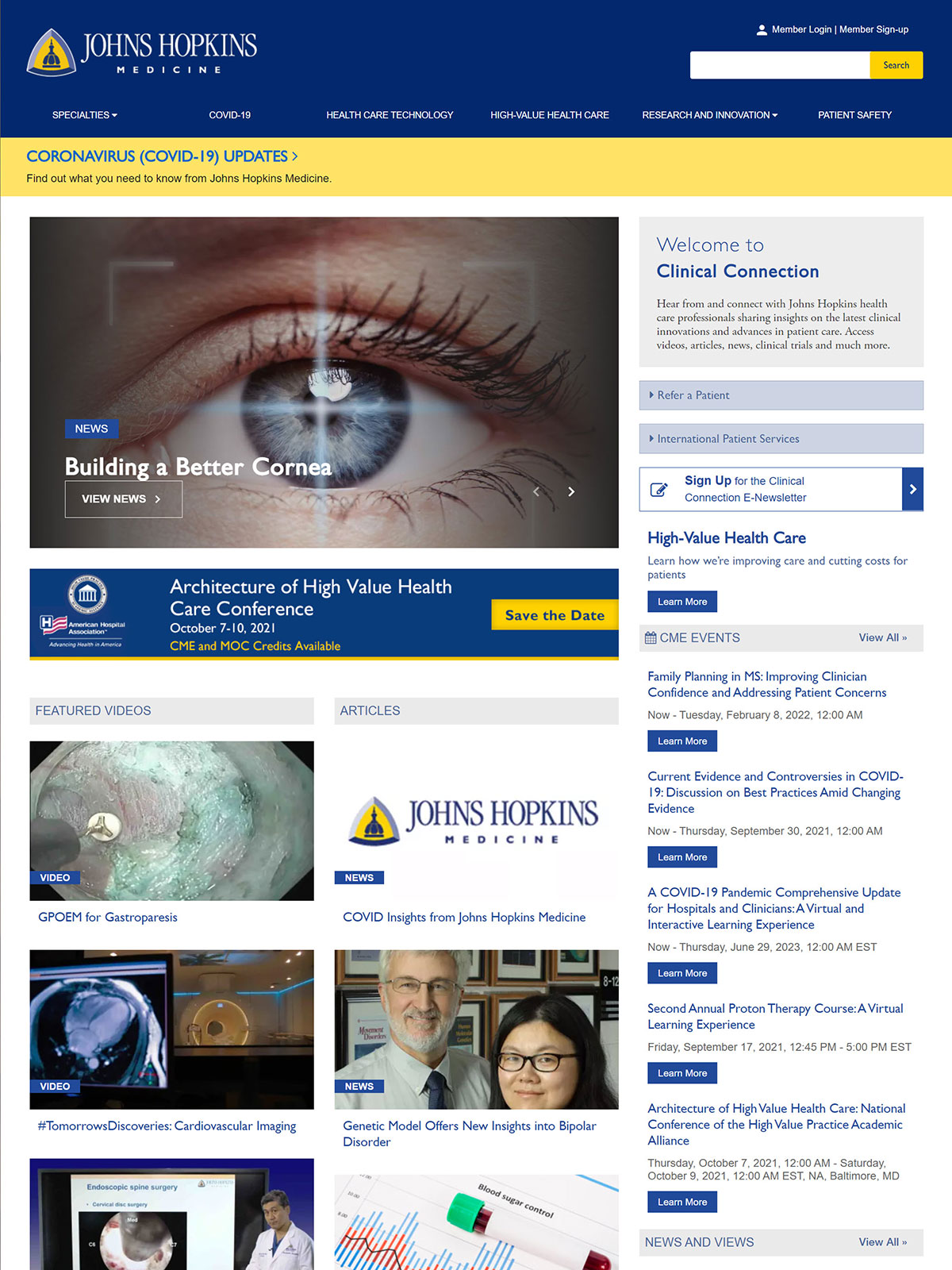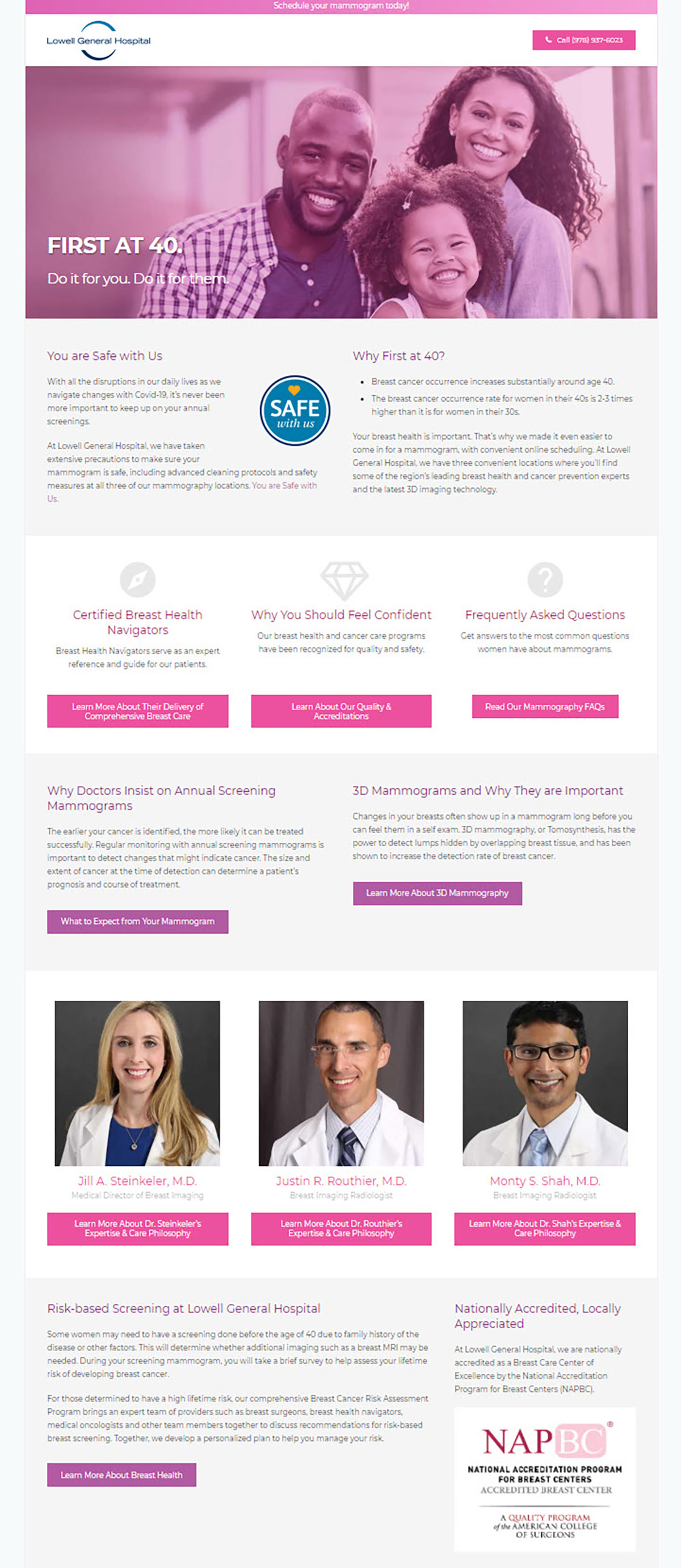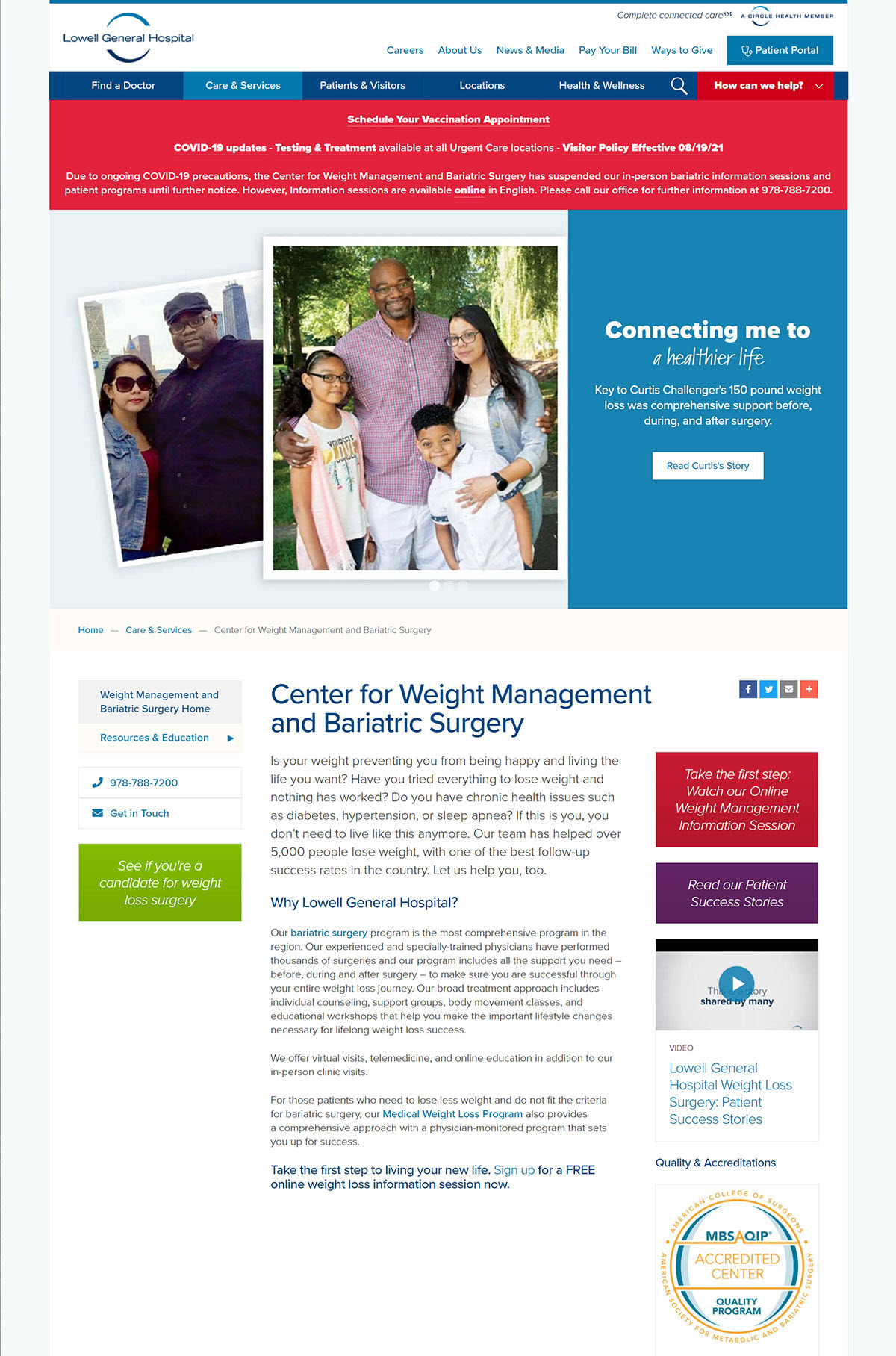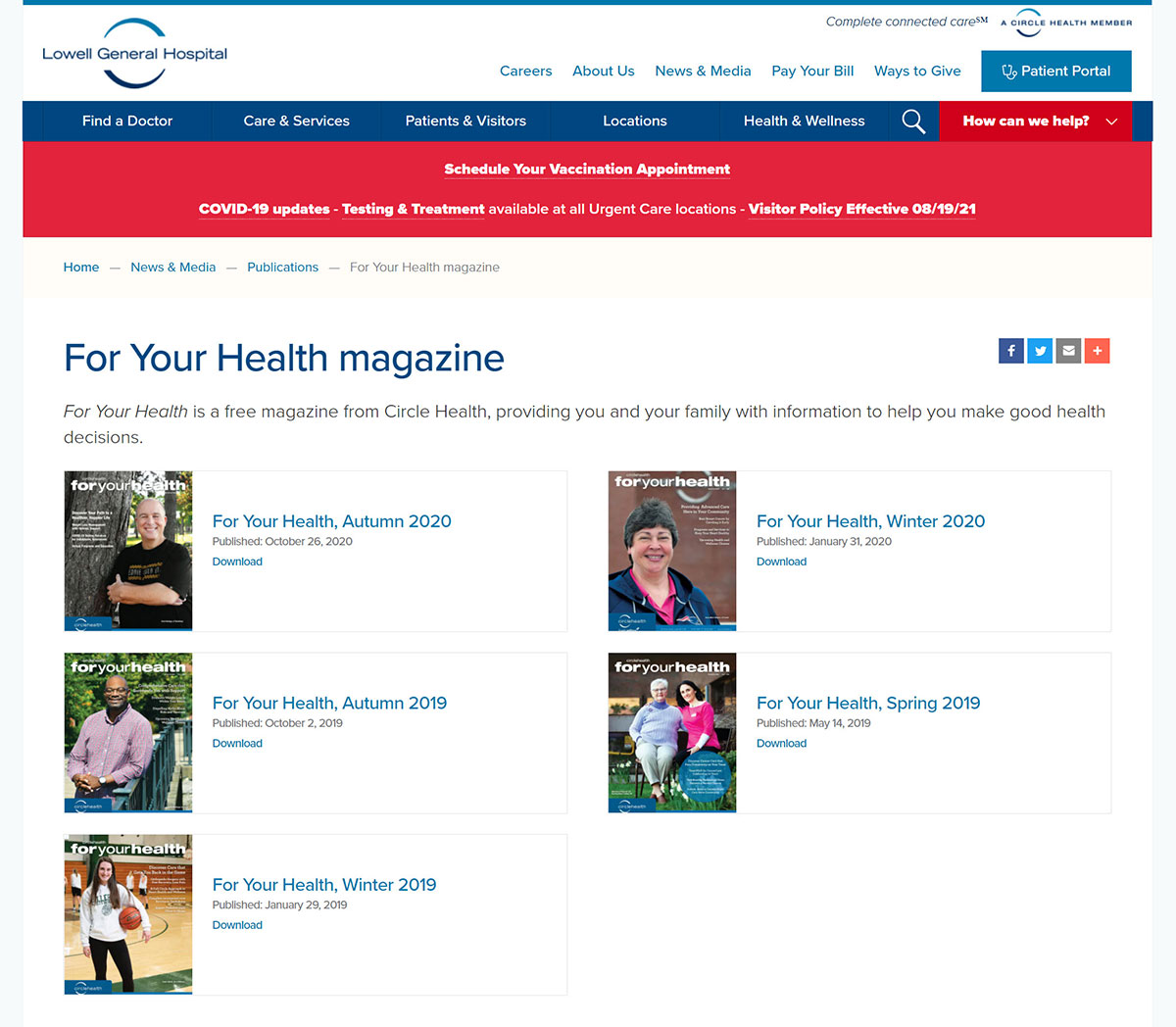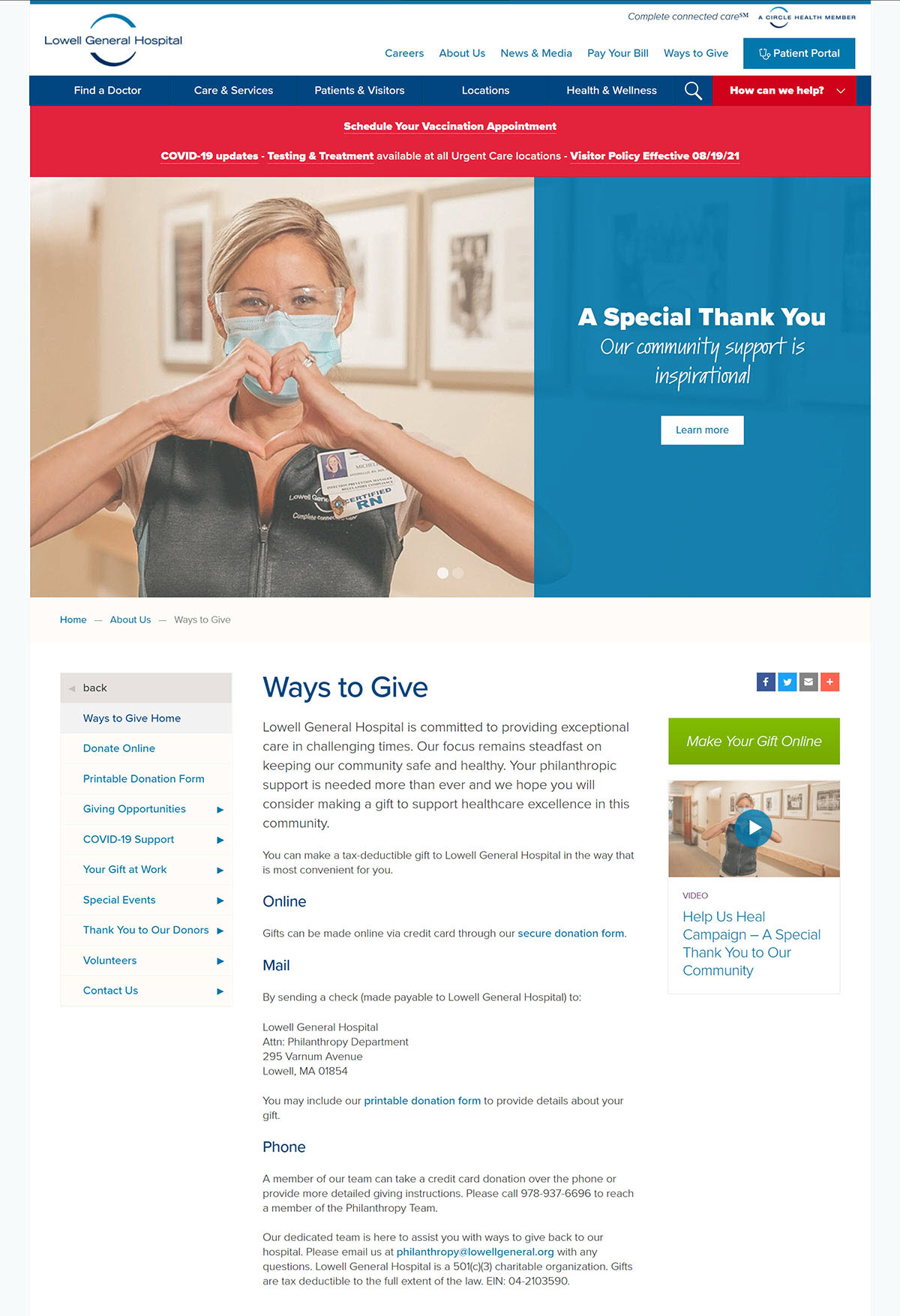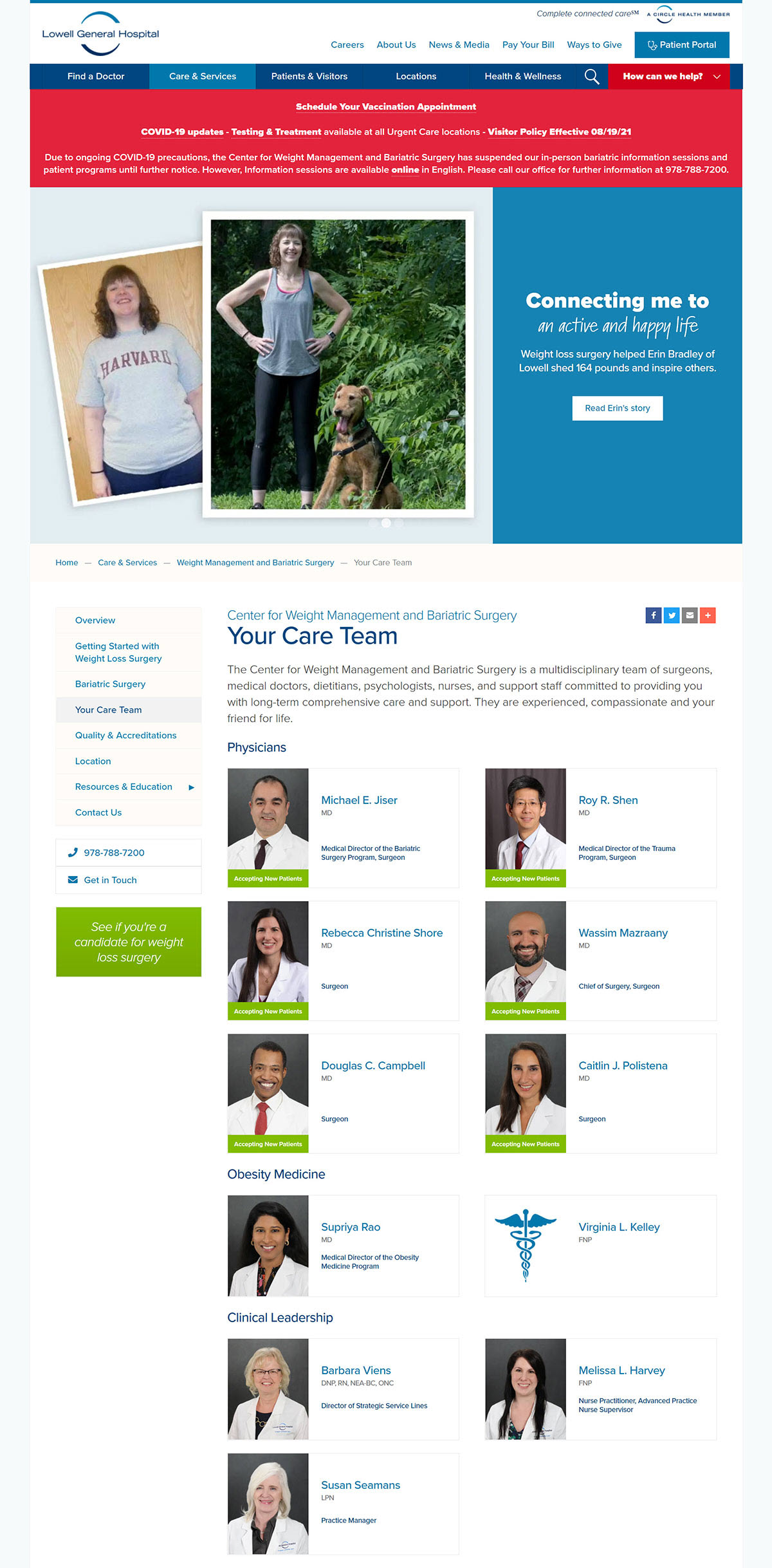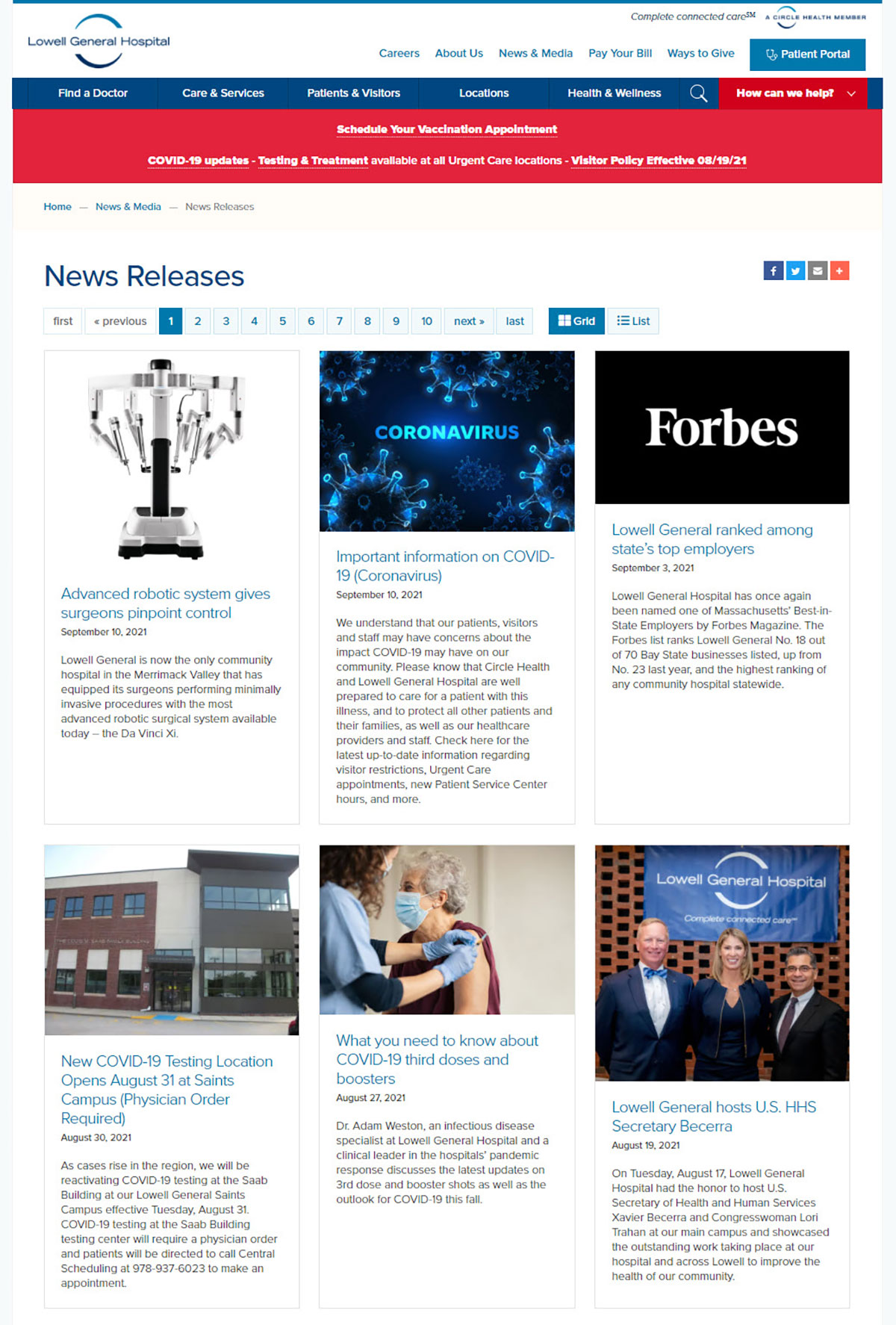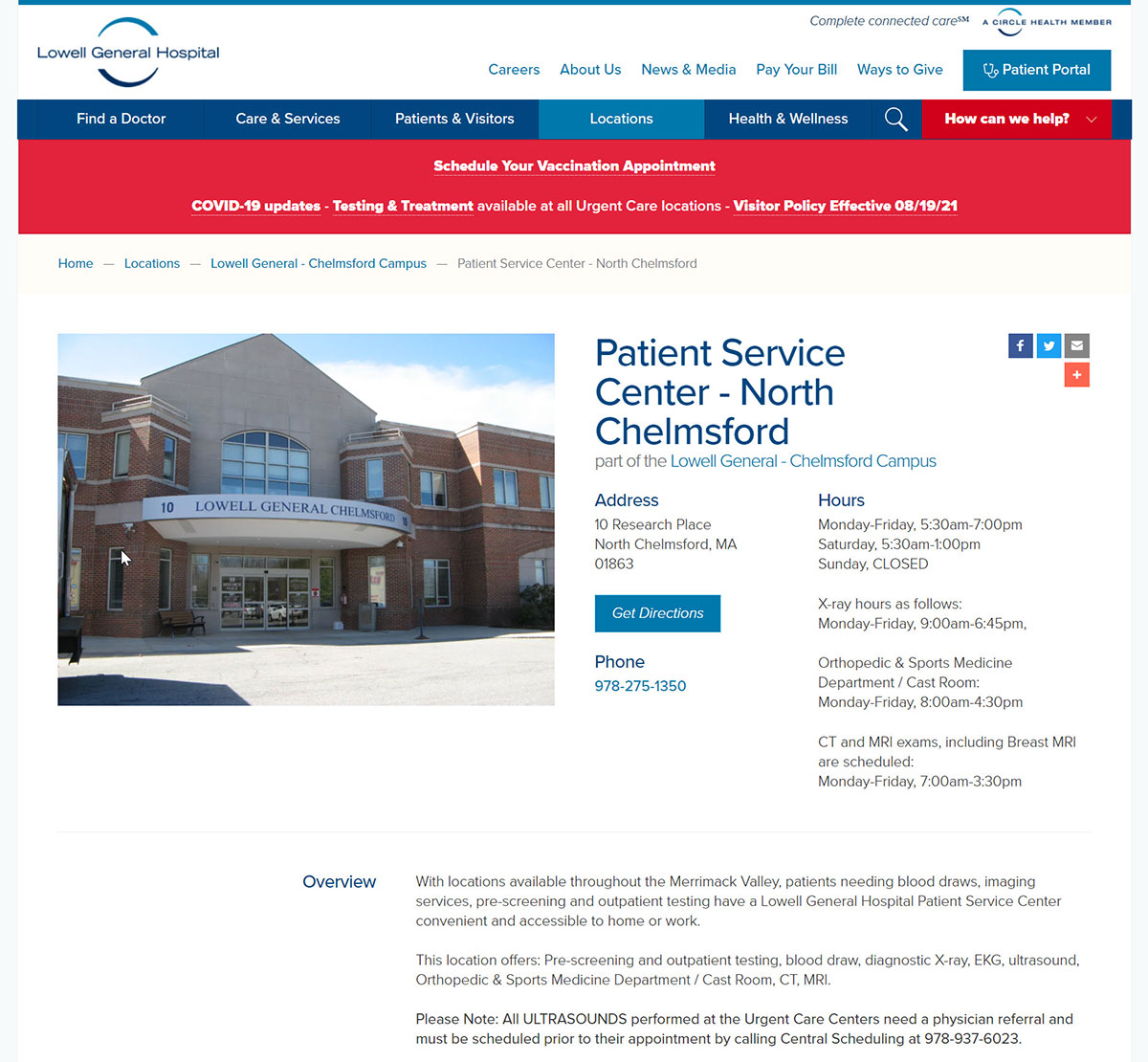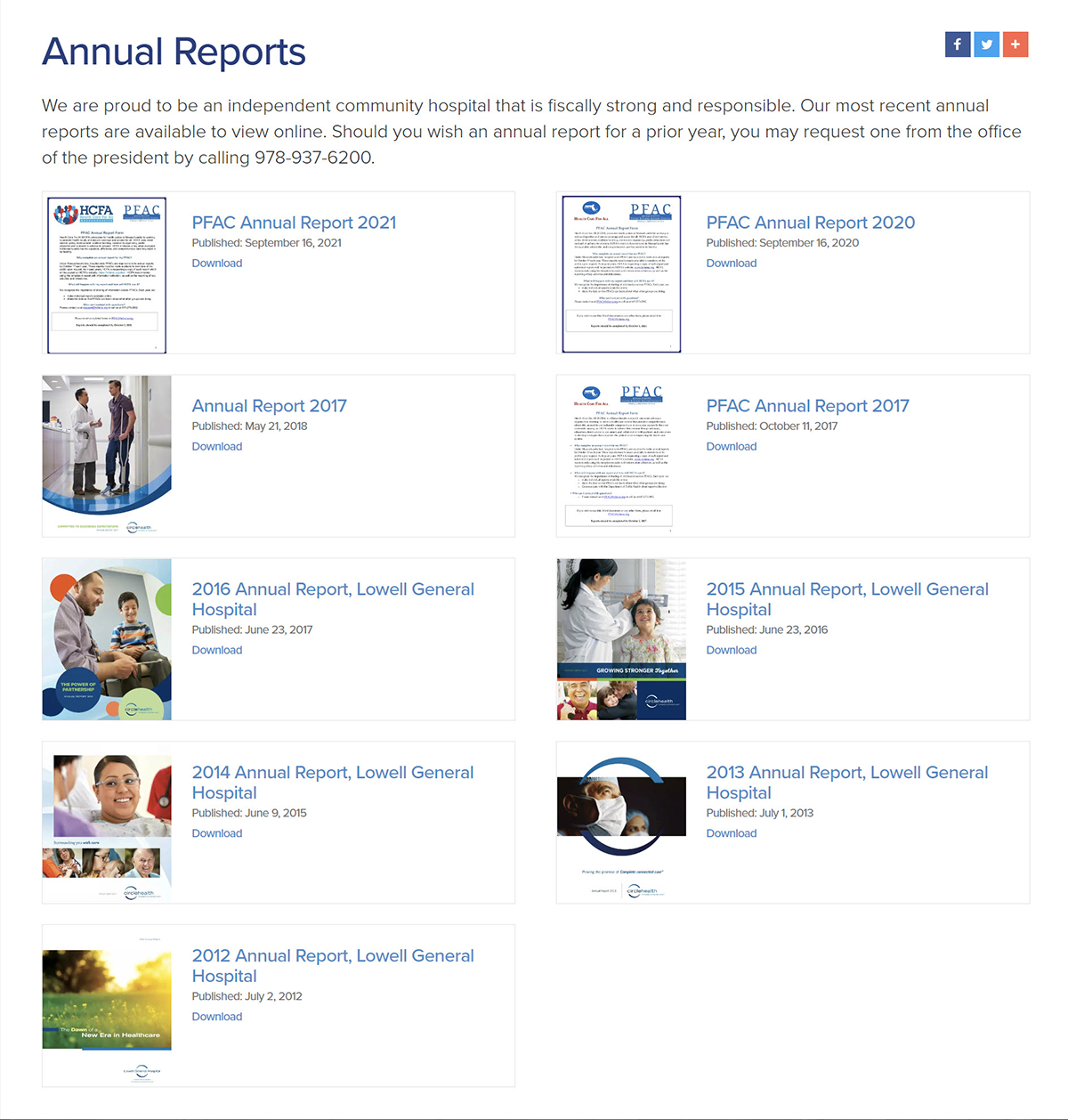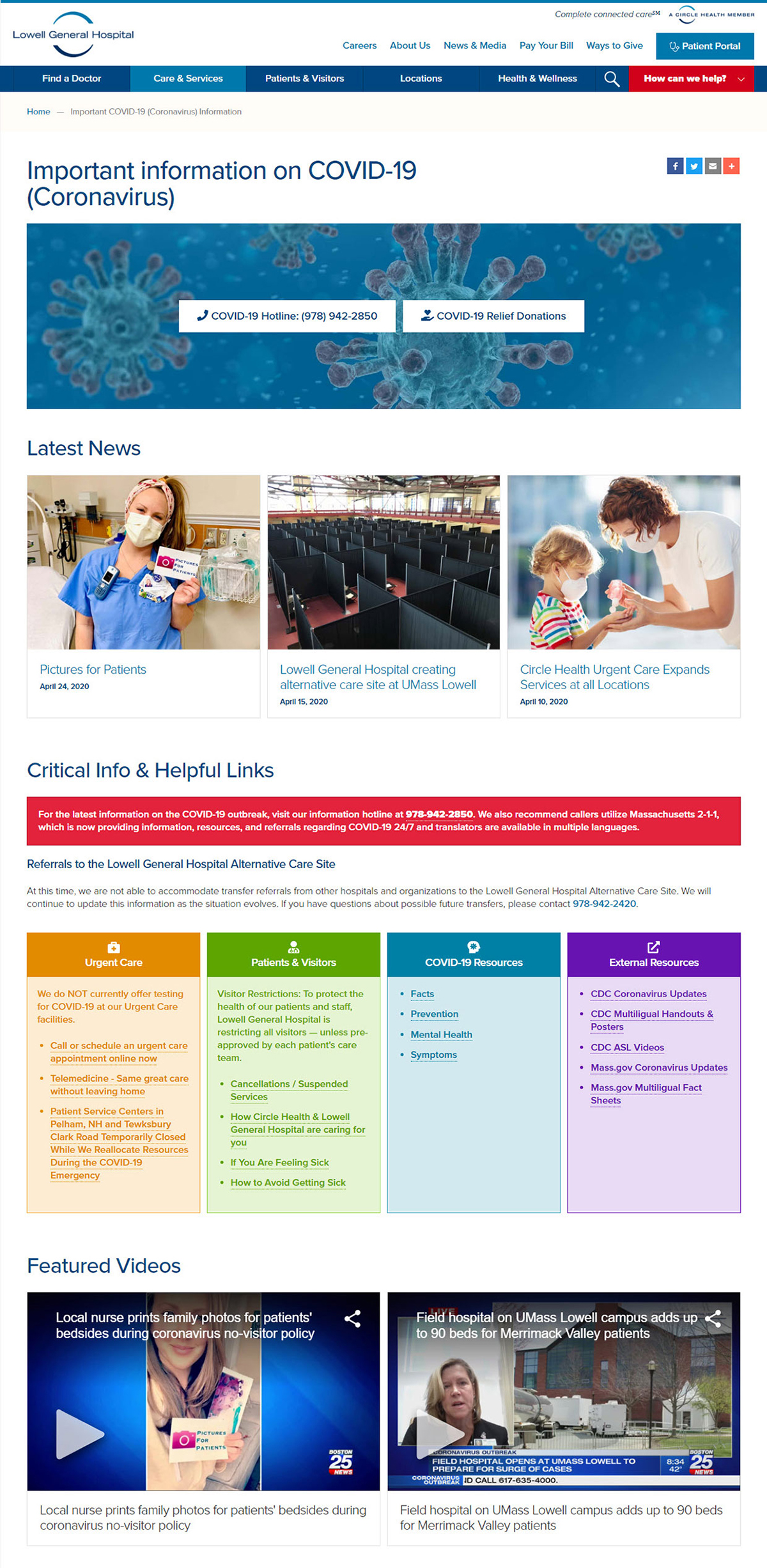Challenge
Lowell General Hospital, located in the Greater Boston area, was in need of a modern, responsive website. While its previous website contained a considerable amount of important content and seemed to offer a few feature-rich tools, it was clear Lowell General needed to make significant changes to its web presence in order to compete more effectively in its service area.
Solution
By working closely with Lowell General Hospital’s marketing team and 3rd-party marketing agency, we were able to architect a solution that produced state-of-the-art, modern web page layouts and drastically improved site usability and functionality. Stakeholder meetings and content audits were conducted with a particular focus on making the site more lean and effective. Content reduction paved the way for a more intuitive, contemporary site. Through extensive research and planning, our savvy technical team was tasked with building a robust, shared content management model that would allow the hospital to more effectively use and re-use critical content in ways they never imagined possible.
Solution Highlights
- New, completely redesigned, responsive website
- Branding & identity standardization
- Enterprise content management
- Credentialed provider data integration
- Service line standardization
- Campaign landing pages & sites
- Dynamic people & team pages
- Patient registration systems
- Appointment scheduling
- Hero banner campaigns
- Event registration & calendar
- YouTube channel, playlists, videos administration
- News management
- Cloudinary advanced image management
- Sophisticated form building
- Bill pay system
- Google Calendar, Maps, User Directory API integrations
- Synchronized Campus, Location and People content across multiple sites
- Publication management system
- Health content integration
- Google Campaign URLs
- Schema
- Separate development, staging, and production environments
Results
Lowell General Hospital’s new site was met with rave reviews by all audiences. The new site framework opened the door to increased site traffic, higher utilization of key self-service applications, stronger organic search engine listings, and better overall audience engagement and conversion.


